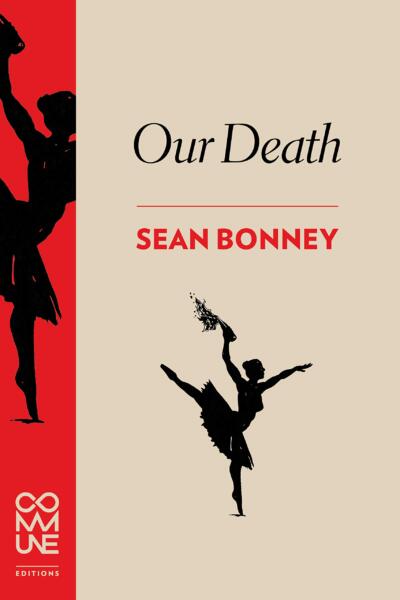1.
In my first blogpost – “Summer Statement” – I talked about the experience of reading Eva Kristina Olsson as if it were a kind of wound, that the experience bled out in me, through the poems I was writing about a painting, a moment, a disaster that became many disasters. I wrote that this experience “vibrated.” In her essay on Eva Kristina Olsson, “The Wounded Path Toward an Interesting Life,”[1] Aase Berg writes that Olsson’s poetry is “a flesh-scream with markedly underdeveloped scar formation.” It is a “continual wound.” By continually tearing off the scars Olsson pushes herself into dangerous mental terrain, but it also through this continual wound that “something truly new” will “take place.” I want to come back to Olsson in a future post, but for this week I would like to consider the scream, the wound and what it has to do with allowing “truly new” art to “take place.”
2.
Recently I wrote a review of the late UK poet Sean Bonney’s great collection Our Death for the Swedish online journal Opulens. What is the scream for Bonney? It doesn’t necessarily have to do with loudness. In one of his blog posts, Bonney writes about the kind of poetry he is drawn to: “Meanings are communicated which risk tearing the poem apart.” Perhaps this meaning that tears apart the poem comes closest to defining what he means by scream. The poems tear apart themselves, makes themselves into continual wounds.
3.
In my recent book of essays on translation, Transgressive Circulation, I bring up John Durham Peters’ book, Speaking Into the Air. Durham argues that our ideal of “communication” takes hold of our culture in the 19th century in reaction to the rise of mass communication. Against the rise of these technologies, many writers and critics espoused a model of communication as “the direct contact between interiorities.” The critics who espoused this troubled ideal were often literary critics – such as the new critics IA Richards – and I believe this ideal exerted a great influence on how we think if literature – especially in the way poetry is treated as a kind of true act of direct communication. In my book I argue that this ideal is what has made US poets and critics so reluctant to engage with foreign poetry in translation – translation is the opposite of the static selfhood of the communication model. It is rewritten by another person, and it’s a continual mediation, continual co-influencing, continual self-mutating runs totally counter to the communication ideal. Translation constantly threatens to create a wound, a deformation zone.
4.
Bonney’s “scream” is intertwined with foreign languages; their foreign words in his mouths become a part of the communality of the scream. Over and over, Bonney’s speaker contemplates foreign sounds in his mouth: “A kind of high metallic screech. Unpronounceable. Inaudible.” There’s an excess in the foreign words that “risk[s] tearing the poem apart.”
5.
Bonney explains: “Poetry doesn’t talk about the world, nor does it create meaning, but rather aims at meanings not yet articulated, not catered to in the currently available aesthetic and social networks.” For Bonney, poetry is not “communication,” but a scream, something that “risk[s] tearing the poem apart.”
6.
To slightly alter Robert Frost’s famous quip, a certain kind of idea of poetry may be “lost in translation” – poetry of unmediated interiority, singularity, authority. But another model of poetry proliferates, screams, mutates in the deformation zones. Another model does not cater to the currently available aesthetic.

7.
In my review, Bonney’s scream made me think about a very different writer: Anne Carson. Her preface to Antigonick – her unorthodox translation of the classic Greek play of political resistance – ends:
Dear Antigone,
I take it as the task of the translator
to forbid that you should ever lose your screams
As in Bonney’s work, Carson associates Antigone’s political resistance with her scream. The scream refuses to comply to established communication channels. The scream is a foreign sound.
8.
In another essay, “Cassandra Float Can,” Carson elaborates on the connection between scream, translation and prophesy. In Aeschylus’s Agamemnon, the first line of the Trojan princess Cassandra is a scream – in Greek. It is “untranslateable, yet not meaningless” because it “conveys specific emotion and can make things happen.” Carson’s Cassandra, like Bonney, prophesizes with screams, a foreigness that pushes the poems toward a sublime tearing apart of language.
9.
In this tearing apart – as opposed to the static model of “direct contact between interiorities” – things can “happen.” Or: “something truly new” can happen. A prophesy can happen.
10.
Prophesy and translation: What they seem to share in Carson’s essay is that they “cut through things” and they have a texture of “Cracks, cuts, breaks, gashes, splittings, slicings, rips, tears, conical intersects, disruptions, etymologies.” The “etymologies” may seem to be at odds with the other features, but I’m reminded of how when we translate – or read a work in translation – we inevitably come across words that may seem “untranslatable” because of cultural or linguistic differences, but which are only untranslatable if you believe in a perfect translation that somehow fully replicates an original. If you think of translation as something that “rips, tears” and lifts the “veils,” then they are not untranslatable. They are the rips. Prophesies.
11.
Carson: “I am interested in people who cut through things.”
[1] Included in Tsunami from Solaris (Action Books, 2019)
